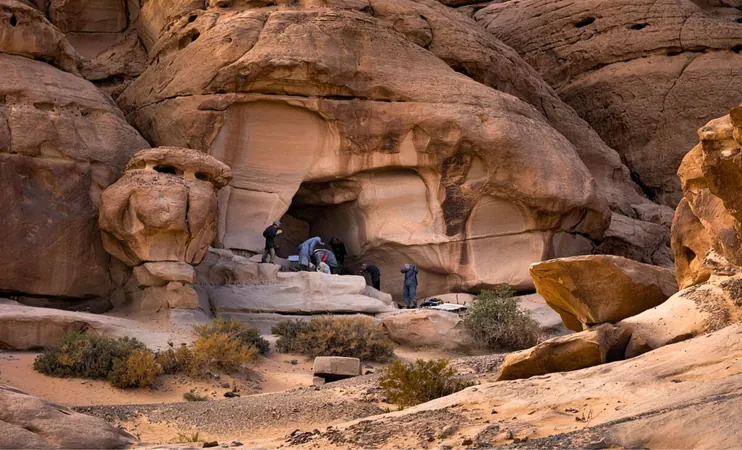
Unveiling the Secrets of the Sahara: 7,000-Year-Old Mummies Challenge Human Ancestry
2025-04-09
Author: Ting
A Groundbreaking Discovery in the Sahara Desert
In an astonishing archaeological breakthrough, scientists have unearthed two 7,000-year-old mummies in the Sahara Desert, radically reshaping our understanding of human ancestry. These remarkable remains, discovered at the Takarkori rock shelter in Libya, belong to ancient female herders from a lineage that doesn’t connect with any known modern populations.
From Desert to Oasis: The Green Sahara
Imagine the Sahara as a vibrant landscape teeming with life, which it was during the African Humid Period that lasted from 14,800 to 5,500 years ago. Known as the "Green Sahara," this region was a lush paradise filled with lakes, wetlands, and diverse ecosystems—home to groups of early humans who flourished long before the sands took over.
A Unique Genetic Puzzle
While researchers expected to find Sub-Saharan genetic influences in the mummies, they were left stunned. Instead, DNA analysis revealed a previously unknown North African lineage that had somehow remained isolated for millennia. This groundbreaking revelation has thrown existing theories about human migration and genetic exchange into disarray.
The Neolithic Connection: A Genetic Link to Foragers
Interestingly, these mummies share a genetic bond with ancient foragers from Taforalt Cave in Morocco, dating back 15,000 years. This connection indicates a striking lack of gene flow between North African and Sub-Saharan groups, suggesting that cultural and agricultural practices evolved more through interaction than through mass migrations.
Rethinking the Spread of Agriculture and Pastoralism
The implications of the Takarkori mummies extend beyond genetics; they reshape how we think about the spread of farming and pastoralism. Previously, scholars believed these practices spread via large population migrations. However, the mummies’ DNA suggests that knowledge and traditions, rather than entire groups, may have diffused among isolated communities.
A Journey Back in Time: The Life of the Takarkori People
The inhabitants of Takarkori were likely heirs to sophisticated hunter-gatherer traditions, equipped with advanced techniques to produce pottery, tools, and more. Their ability to settle temporarily marked a significant shift from the nomadic lifestyles typical of their peers, underscoring their adaptability to the unique environment of the Green Sahara.
Isolated Yet Evolved: The Takarkori Enigma
The diverse geography of the ancient Sahara, featuring wetlands and woodlands, likely created natural barriers that fostered the genetic uniqueness of the Takarkori people. This isolation contributed to a distinct genetic profile, providing rare insights into a lost population that thrived in an era long before the desert sands became a dominant force.
A Call to Rewrite History
As these findings gain traction, they urge a reevaluation of our understanding of human history in North Africa. The Takarkori mummies are not just relics of the past; they are key pieces in the puzzle of human evolution that invite us to explore connections and cultural exchanges that have shaped our world.

 Brasil (PT)
Brasil (PT)
 Canada (EN)
Canada (EN)
 Chile (ES)
Chile (ES)
 Česko (CS)
Česko (CS)
 대한민국 (KO)
대한민국 (KO)
 España (ES)
España (ES)
 France (FR)
France (FR)
 Hong Kong (EN)
Hong Kong (EN)
 Italia (IT)
Italia (IT)
 日本 (JA)
日本 (JA)
 Magyarország (HU)
Magyarország (HU)
 Norge (NO)
Norge (NO)
 Polska (PL)
Polska (PL)
 Schweiz (DE)
Schweiz (DE)
 Singapore (EN)
Singapore (EN)
 Sverige (SV)
Sverige (SV)
 Suomi (FI)
Suomi (FI)
 Türkiye (TR)
Türkiye (TR)
 الإمارات العربية المتحدة (AR)
الإمارات العربية المتحدة (AR)